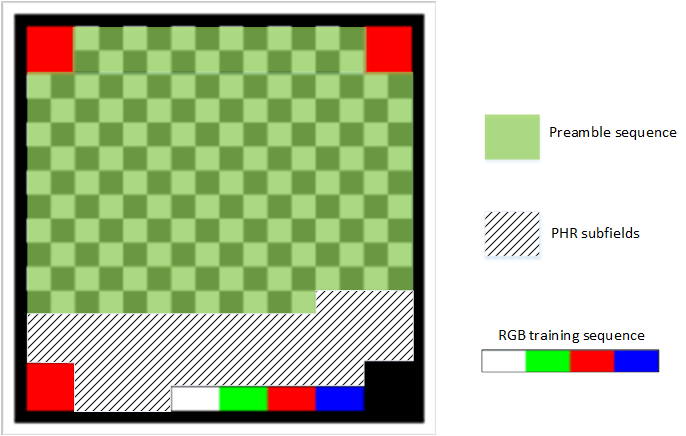Công nghệ LiFi
IEEE standard – PHY frame format for Screen Modulation Systems
This post reviews the design of the Physical-layer Packet Data Unit (PPDU) for A-QL and HA-QL operating modes within PHY IV Screen modulation of IEEE 802.15.7m. For implementation, the Data Frame Format is crucial; each operating mode has its packet format and the format specification has its reason. At least, time is spent on optimizing particular communication performance criteria (such as an intended bit rate for a particular transfer mode) while reducing the transmission overhead.
We know that the operation of OCC modes (including this A-QL) will support unidirectional communication mostly. The camera will decode data when it “sees” the transmitter. Thus, the general structure of PPDU for all OCC Operating modes becomes simpler than bidirectional VLC, and simply illustrated as in Figure 1.

- SHR: Synchronization Header
- PHR: Physical-Layer Header
- HCS: Header Check Sequence
- PSDU: PHY service data unit
“Use of over-the-air PHY frame configuration is forbidden for PHY types IV, V and VI. It is mandatory that PHY frame configuration be done via the PHY PIB. This is due to the fact that unlike traditional wireless LAN/PAN, the data rates associated with OCC are such that the configuration overhead cannot be tolerated. ” — IEEE 802.15.7m
The details on the format of PHY VI operating modes are reviewed as follows.
A-QL PPDU

A-QL preamble field
The preamble field for A-QL is within a data-block time long. The preamble sequence (1010..10) shall have 64 bits length. The remainder of a block carrying the preamble is for PHR subfields and the training sequence.
A-QL PHY header
PHY header subfields shall be mandatorily configured by PHY PIB attributes. Besides, PHR field shall be optionally used to notice the change of the following PHY header subfields:
Table 1– A-QL PHR subfields
| PHY header subfields | Bit-width | Explanation on usage |
| PSDU length | 16 | PSDU length in byte |
| HSC | 16 | Header check sequence |
A-QL HSC
CRC-16 shall be used as HSC for PHY header if it is presented. The generation of CRC-16 (with polynomial generator 0x1021) is described in Annex C of IEEE 802.15.7m.
A-QL optional field
A channel estimation sequence shall be added as an extended subfield after the PHR subfields to support a receiver dealing with multi-color imbalance or multi-color interference. The channel estimation sequence details are discussed in section “15.1.4 A-QL Color calibration at the receiver.” of IEEE 802.15.7m.

A-QL PSDU
The A-QL PSDU consists of multiple payload blocks. The count of payload blocks in PSDU (N) is calculated from the PSDU length that is read from the PHY header.
Table 2—A-QL PSDU frame format
PSDU | |||
Data block 1 | Data block 2 | … | Data block N |
The configuration of PSDU length is implemented via the PHY PIB phyAqlPsduLength.
HA-AL PPDU

HA-QL preamble field
The preamble field for HA-QL is one data-block time long (equivalent to two optical clock times), consisting of two blocks. The second block is the inverse form of the first block.
The preamble sequence (1010…10) along with four states of reference cells have 64 bit-length and fill up the entire block of HA-QL code (8×8 HA-QL block for example).
HA-QL PHY header
Not used.
HA-QL HSC
Not used, because PHY header is not used.
HA-QL PSDU
The HA-QL PSDU consists of multiple payload blocks. The number of data blocks (N) is counted from a preamble to the next preamble.
Table 2—HA-QL PSDU frame format
PSDU | |||
Data block 1 | Data block 2 | … | Data block N |
The configuration of PSDU length shall be implemented via the PHY PIB phyHAqlPsduLength.
Conclusion and Discussion
- The frame format for A-QL mode is briefly explained.
- A further question is that if A-QL is designed for unidirectional communication and there are many options of frame formats available then how does Rx know which one is applied at Tx. The non-over-the-air configuration method for OCC systems is also within the scope of IEEE 802.15.7m. Later, we will have a long discussion on this issue.


